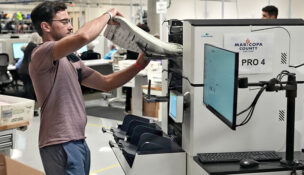‘False positives’ hamper GPS monitoring
Arizona Capitol Reports Staff//November 9, 2007//[read_meter]
‘False positives’ hamper GPS monitoring
Arizona Capitol Reports Staff//November 9, 2007//[read_meter]
Technical problems plagued the satellite monitoring of certain offenders on probation during its first year of implementation, a panel looking into the program was told Nov. 6.But panel members were...
No tags for this post.

















